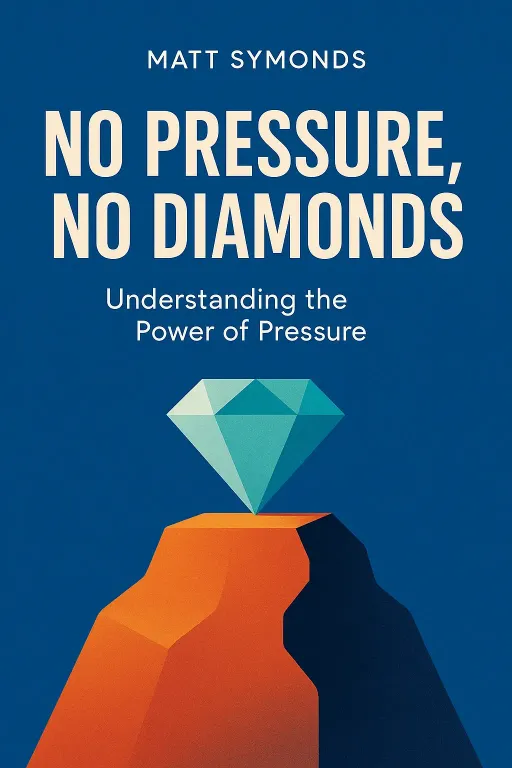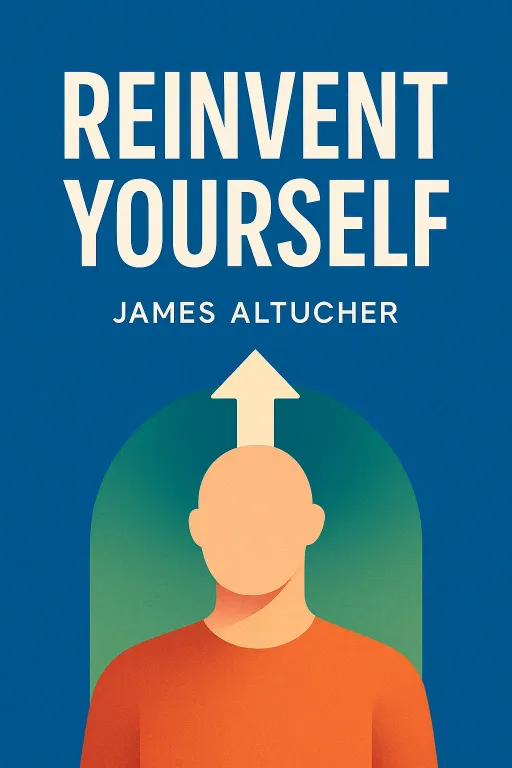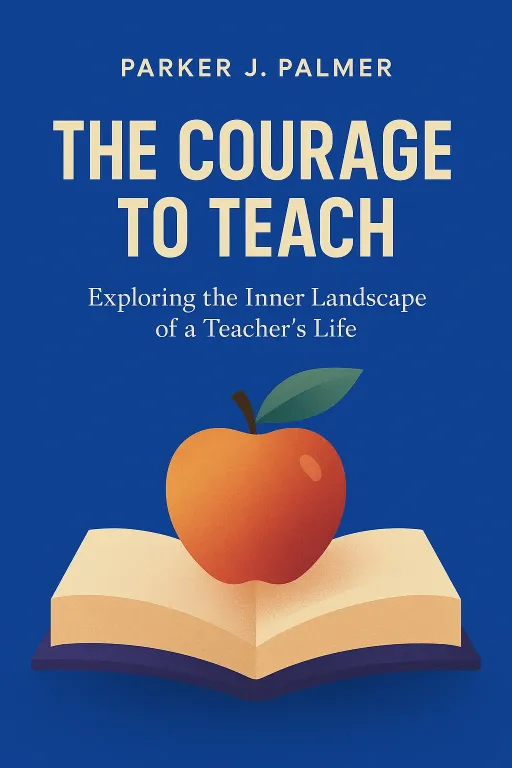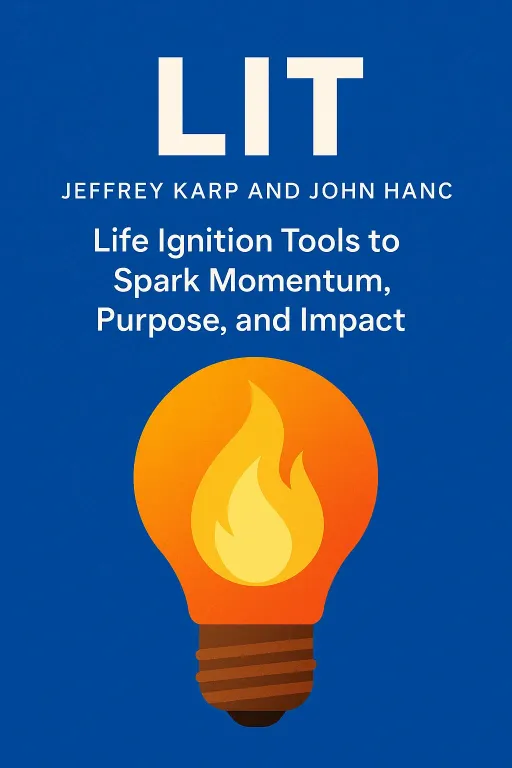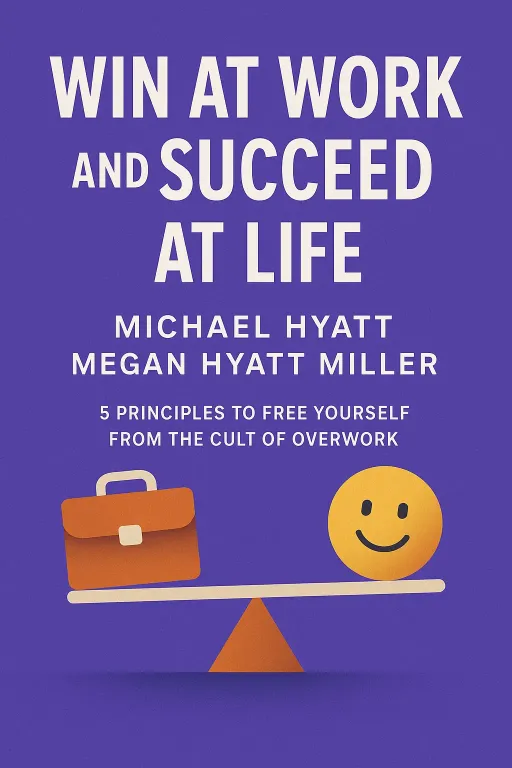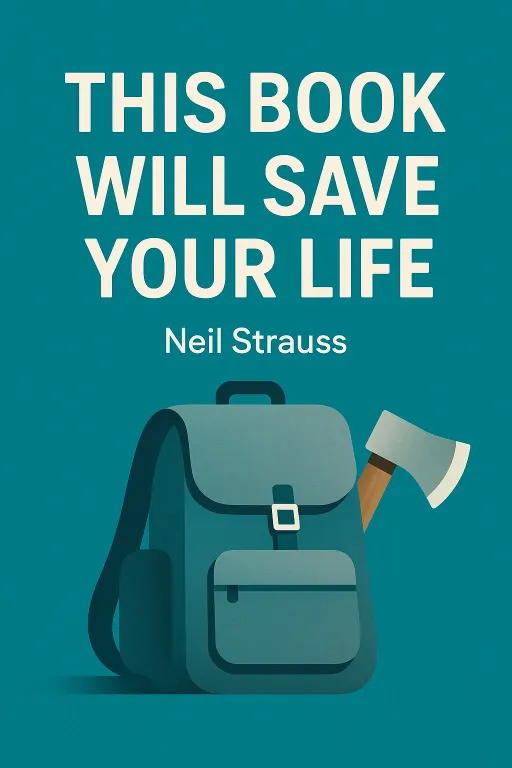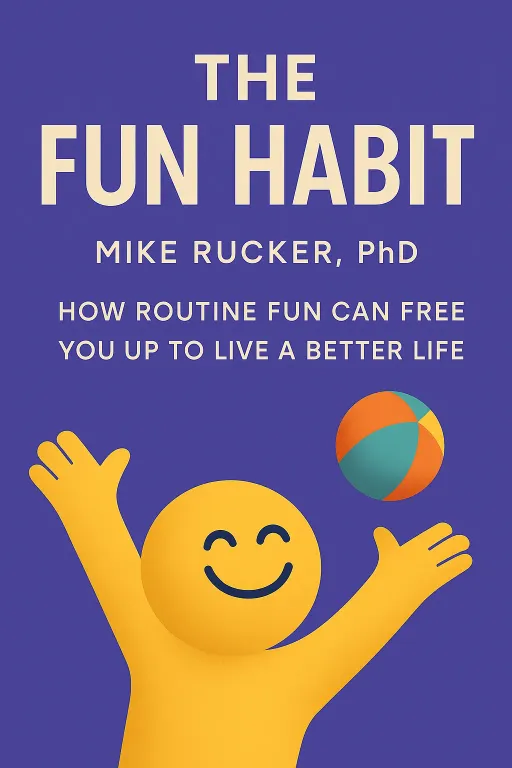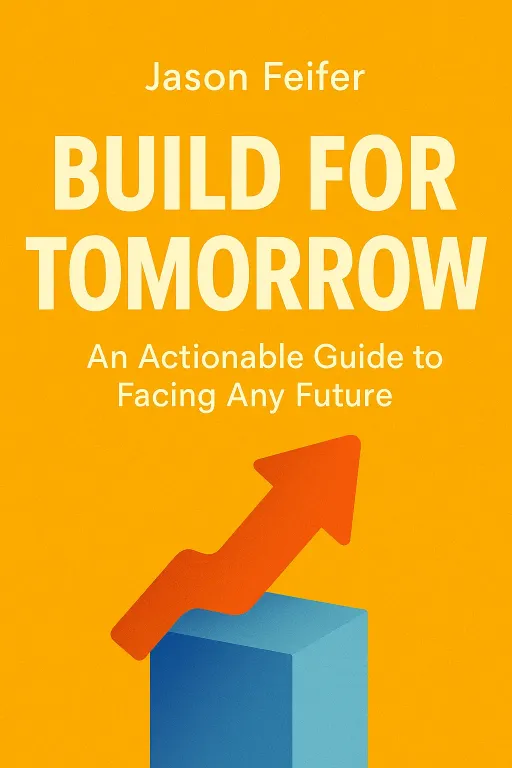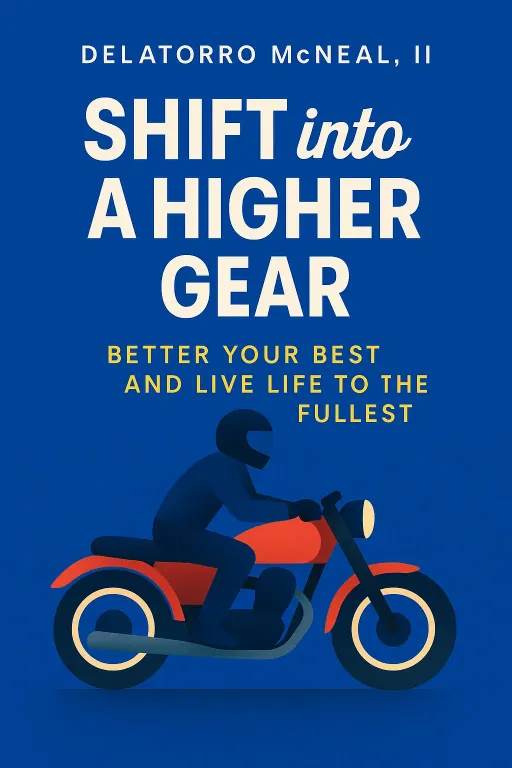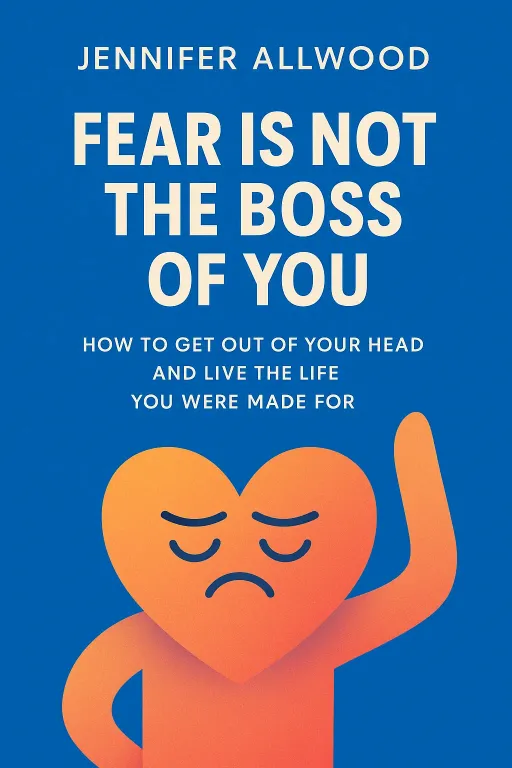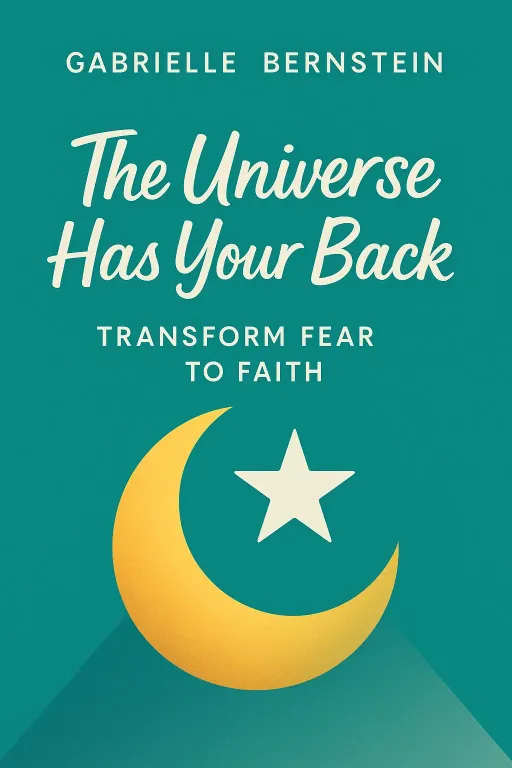
The Force Within: A Jedi's Guide to the Universe
12 minGolden Hook & Introduction
SECTION
Albert Einstein: What if I told you the Jedi Knights weren't just a sci-fi fantasy, but a blueprint for a better life? That the "Force" they spoke of—an energy field that connects all living things—is real, and you can learn to use it? That’s the radical premise we’re exploring today through Gabrielle Bernstein’s book, "The Universe Has Your Back." We're treating it as a Jedi field manual for the modern world. Welcome, Sean.
Sean Hicks: Thanks, Albert. I love that framing. As someone fascinated by mindset and empathy, the idea of a practical guide to the "Force" is incredibly compelling.
Albert Einstein: Precisely! And this book offers just that. So today we'll dive deep into this from three perspectives. First, we'll explore how to awaken your 'Inner Force' and tap into a power you never knew you had. Then, we'll discuss how to see obstacles not as roadblocks, but as your own 'Cosmic GPS' guiding you to where you need to be. And finally, we'll focus on the ultimate Jedi skill: resisting the dark side of judgment to achieve a state of oneness with the world around you. Ready for your training, Padawan Sean?
Sean Hicks: I was born ready. Let's do it.
Deep Dive into Core Topic 1: The Hidden Power: Awakening to Your Inner Force
SECTION
Albert Einstein: Wonderful. So, Sean, to start this Jedi training... have you ever had a moment, maybe in nature or deep in thought, where you felt a flicker of connection to something… bigger? A sense of peace or flow that came from beyond your own logical mind?
Sean Hicks: Absolutely. Sometimes when I'm working on a creative problem, or even just listening to a really powerful piece of music—like something from Taylor Swift's 'folklore' album—there's a moment where my own anxieties fade and it feels like the ideas are just... arriving. It's a feeling of being a conduit rather than the creator.
Albert Einstein: A conduit! Yes, that's the perfect word. Bernstein argues that this feeling isn't an accident; it's our natural state. It's our connection to the Universe, our Inner Force. But we forget. We get lost in fear and rely only on our own strength. She shares a powerful story about her first real awakening to this. She was sixteen, struggling with a deep, inexplicable depression.
Sean Hicks: A tough age for that kind of weight.
Albert Einstein: Immensely. Her mother, who she describes as a hippie and a meditator, gave her a simple mantra, 'So, Ham,' and told her to meditate for five minutes a day. Now, you can imagine a sixteen-year-old's skepticism. But she tried it. And she felt some immediate relief. The real test came a couple of weeks later. She was at a beach house, and that familiar wave of anxiety and sadness started to wash over her.
Sean Hicks: The moment of truth. Does the new practice actually work under pressure?
Albert Einstein: Exactly. She excused herself, went into a small room, and started reciting the mantra. And this is the key moment. Within a minute, she says she felt a 'warm blanket of loving energy' wrap around her. The anxiety, the depression—it just lifted. It wasn't that she fought it off; it's that she connected to something so much bigger and more loving that the fear couldn't coexist with it. It was her first, undeniable experience of the Force.
Sean Hicks: That's fascinating. It's a complete mindset shift. The typical approach to anxiety or a creative block is to fight it, to analyze it, to try and solve it with your intellect. But this suggests the solution isn't to fight the darkness, but to turn on a light. To connect to something that holds the feeling, rather than trying to escape the feeling itself.
Albert Einstein: You've grasped the core of it. It's a shift from resistance to allowance. And you mentioned creativity—this is what artists and innovators call the 'flow state,' isn't it? When you're not forcing it, but allowing it to flow through you. Bernstein's argument is that this 'flow' is always available. It's the loving, supportive energy of the Universe. Our only job is to get out of its way.
Sean Hicks: And that has huge implications for leadership, too. A leader who operates from a place of fear and control creates a tense, constricted environment. But a leader who trusts that flow, who acts as a conduit for good ideas and empowers their team, creates an environment where innovation can actually happen. They're tapping into the collective 'Force' of the group, not just their own limited strength.
Albert Einstein: Beautifully put. That is the first step on the Jedi path: recognizing that this power, this Force, is not something you have to build, but something you have to return to.
Deep Dive into Core Topic 2: The Cosmic GPS: How Obstacles Become Detours
SECTION
Albert Einstein: It's a profound first step. But feeling the Force in a quiet room is one thing. Trusting it when you're, say, trapped in a metal box between floors… that’s a different level of mastery.
Sean Hicks: That sounds like a very specific and stressful Jedi trial.
Albert Einstein: It was! This leads to our second principle: seeing obstacles as your Cosmic GPS. Bernstein tells this incredible story. She and her husband were in a cycle of having petty arguments. One afternoon, after a meeting, they get into an elevator. And... it jolts to a stop. They're stuck.
Sean Hicks: Oh no. And if I remember the book, her husband is claustrophobic, right?
Albert Einstein: Severely. So, her first reaction is pure panic. Her mind is racing. But then, she hears her inner voice, her intuition, say, "Be the light." Instead of joining him in panic, she makes a conscious choice. She starts rubbing his back, whispering to him, talking about his interests—anything to shift the energy from fear to love. She becomes his anchor in the storm.
Sean Hicks: She chose to be a source of calm instead of another source of chaos.
Albert Einstein: Precisely. And after about 45 minutes, she says a quiet prayer for help. Within minutes, the repairman arrives. But the real miracle wasn't the rescue. It was what happened inside that box. When they walked out, the tension from their earlier argument was gone. The cycle was broken. They felt more connected than ever. The obstacle—being physically stuck—was the very thing that got them emotionally unstuck. It was a detour in the right direction.
Sean Hicks: Wow. It's like the universe said, 'You two are stuck in this argumentative loop, so I'm going to literally stick you in a box until you figure it out.' It's a radical form of couples therapy, orchestrated by the cosmos!
Albert Einstein: A cosmic intervention! I love that. And you're right, it's a pattern-interrupt. It forced a different response.
Sean Hicks: It really speaks to the 'Love Relationships' aspect I'm interested in. So often in a conflict, our instinct is to escalate, to prove our point. But she did the opposite. She surrendered her need to be 'right' in the argument and chose to serve the immediate need for 'love' and 'safety.' That's a powerful lesson. In leadership, we call that 'reframing a crisis as an opportunity,' but this is on a cosmic scale. It suggests that the universe itself might be conspiring to help us grow, using the very challenges we resent.
Albert Einstein: Yes! The obstacle isn't blocking the path; it the path. That is the essence of trusting the Force. It knows the way better than you do.
Deep Dive into Core Topic 3: The Path to Oneness: Resisting the Dark Side of Judgment
SECTION
Albert Einstein: Exactly! And that reframing leads us to the ultimate test for any Jedi... what happens when the 'obstacle' isn't a situation, but another person who drives you absolutely mad?
Sean Hicks: The ultimate test of patience and empathy. The social elevator, if you will.
Albert Einstein: The social elevator! Perfect. This brings us to our third and final principle: resisting the dark side of judgment. Bernstein is brutally honest about her own judgmental nature. She tells a story about being at a dinner party. There's a woman there who she describes as 'bombastic,' loudly dominating the conversation, boasting about her career.
Sean Hicks: I think we've all been at that dinner party.
Albert Einstein: We have. And Bernstein's internal monologue is just filled with judgment. She feels annoyed, competitive. She starts trying to one-up the woman. The whole evening, she's stewing in this negative energy. After dinner, the woman approaches her, and Bernstein braces for more boasting. But instead, the woman looks at her and says, 'I noticed you weren't drinking. I'm sober, too. Seven years.'
Sean Hicks: Oh, wow. That changes everything.
Albert Einstein: Instantly. In that moment, all the judgment dissolved. The separation vanished. She wasn't looking at a competitor anymore; she was looking at a mirror. A fellow traveler on a difficult path. She realized the woman's desperate need to be seen and validated was a reflection of a feeling she also knew intimately. It was a profound lesson in what Yogi Bhajan said: 'Recognize the other person is you.'
Sean Hicks: That's the core of empathy, isn't it? We often think empathy is about feeling someone, but this suggests true empathy is about recognizing the someone. The irritation we feel towards another person is often a signal, a mirror showing us a part of ourselves we haven't accepted or healed.
Albert Einstein: The splinter in our own eye! The book argues that judgment is the ego's primary tool. The ego wants to divide, to separate, to make you feel special or better than. It's the path to the dark side. But the Force, the Universe, Spirit—it seeks to unify.
Sean Hicks: As an INFP, that resonates so deeply. That drive for harmony and authentic connection is paramount. And this provides a practical tool for it. When you feel that spike of judgment, instead of leaning into it, you can ask, 'What is this person reflecting back to me? What part of my own story is being triggered here?' A leader who understands that doesn't just manage team conflict; they can actually heal it by getting to the root of the projection.
Albert Einstein: They heal it. Yes. They see the call for love underneath the attack. That is the mark of a true Jedi Master.
Synthesis & Takeaways
SECTION
Albert Einstein: So, there we have it. The three steps on the path of the modern Jedi, according to Gabrielle Bernstein. First, you awaken to your Inner Force—that loving power within.
Sean Hicks: Then, you learn to trust it, seeing life's challenges not as problems but as your Cosmic GPS—divine detours and Jedi trials.
Albert Einstein: And finally, you walk the path to mastery by resisting the dark side of judgment, choosing empathy, and recognizing that we are all one. Awaken, Trust, Unify.
Sean Hicks: It's a powerful and surprisingly practical framework for everything from self-care to leadership to building better relationships.
Albert Einstein: Indeed. And so, it leaves us with a final thought experiment. A call to action for everyone listening, and for you, Sean. Think of one challenge in your life right now—a frustration at work, a conflict in a relationship, a personal setback. What if it's not a roadblock? What if it's a Jedi trial, perfectly designed for your growth?
Sean Hicks: That's a game-changing question. It shifts you from being a victim of your circumstances to being a student of your life. It puts the power right back in your hands. It's not asking 'Why is this happening to me?' but 'What is the Force trying to teach me?'
Albert Einstein: And in that question lies all your power. Thank you for exploring this with me, Sean.
Sean Hicks: The pleasure was all mine, Albert. May the Force be with you.
Albert Einstein: And also with you.
